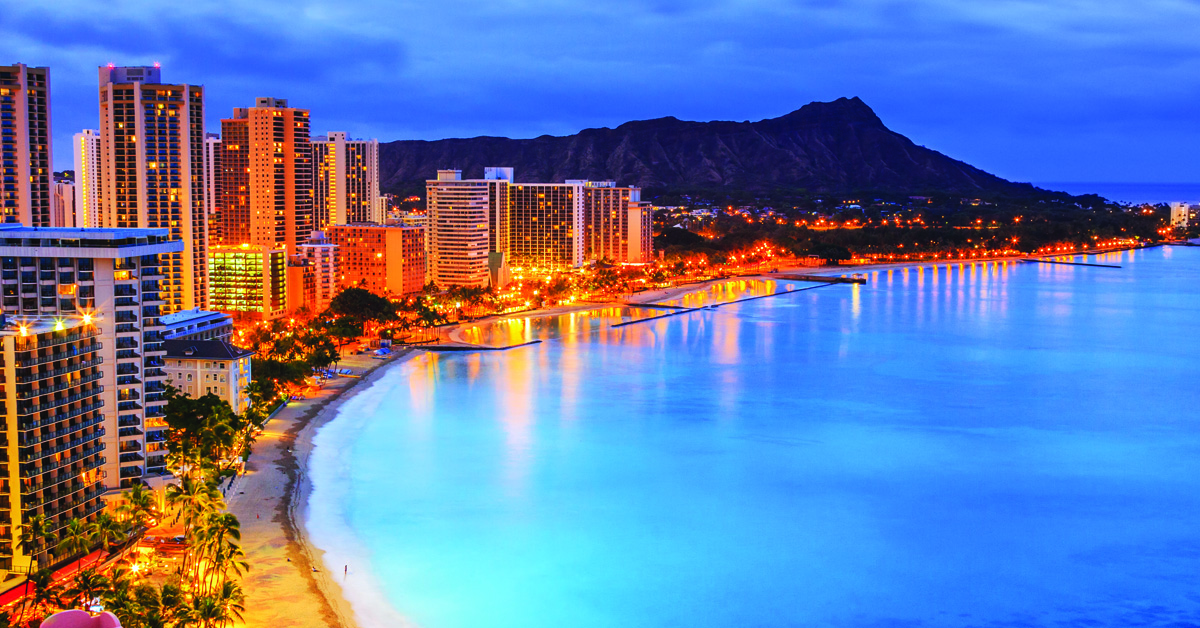The Pacific Region states of Oregon, Washington, Alaska and Hawaii have a lot in common — tourism, major fishing industries, natural beauty and the waters of the Pacific Ocean. They also have a unique geological feature in common: volcanoes.
Often called the “Ring of Fire,” the Pacific Rim is the planet’s biggest hotspot for volcanic activity. The U.S. Geological Survey (USGS) monitors 55 “high-priority” volcanoes in six states due to the risk they pose to people and property. The four Pacific Region states account for 47 of the most threatening volcanoes in the country.
Within the Pacific Rim lies the Cascade Arc, a range of volcanoes stretching from Northern California to southern British Columbia, including 10 major peaks in Oregon and Washington. This includes the volcano considered the most dangerous in the country: Mount Rainier. An eruption from Rainier could trigger mudflows that would, within hours, bury land on which 100,000 people live.
Alaska is home to 90 active volcanoes and volcanic fields, and it has the most volcanoes considered high priority by the USGS. Eruptions are hazards not just for residents of Alaska but for passenger and freight aircraft that pass overhead, according to the Alaska Volcano Observatory.
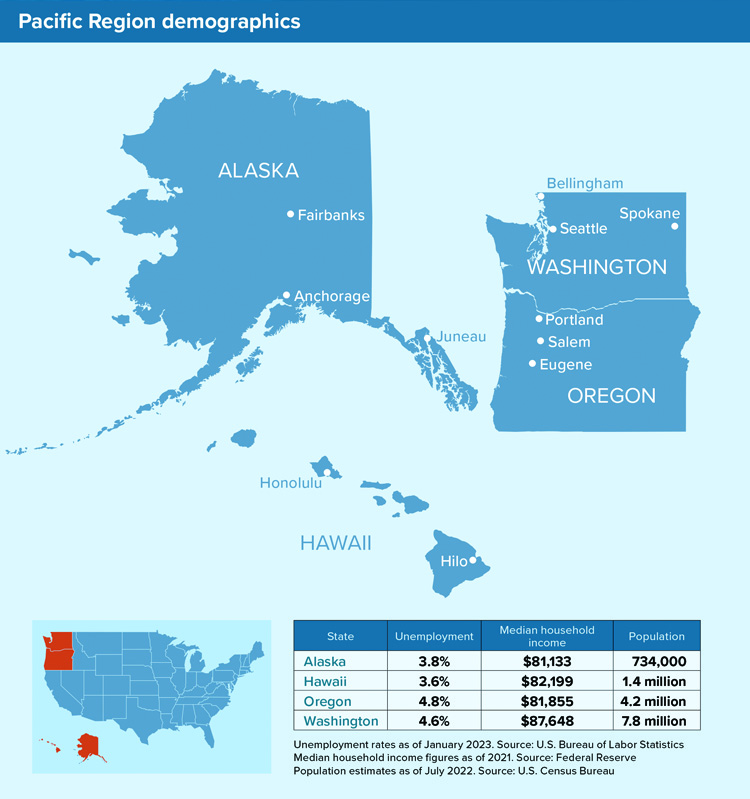
On the Big Island of Hawaii, the volcano Kilauea had a major eruption in 2018. The lava flow lasted four months and destroyed some 1,800 structures, including 700 homes. Hawaii County offered a buyout program for property owners who lost their homes, and the properties acquired by the county will remain as open space and not be redeveloped.
For the most part, this is all just food for thought. Most volcanoes aren’t erupting regularly, and seismic and volcanic events are recorded on a geological time scale, not a human one. Developers regularly build and homeowners regularly buy in even riskier places, such as flood plains and areas prone to earthquakes, wildfires, hurricanes or tornadoes. The natural beauty and attractive cultures of these states are often worth the risk. But like any risky areas, those who buy real estate near active volcanic sites need comprehensive insurance, and many homeowners policies cover damage caused by eruptions.
While these states have a lot in common both culturally and geologically, their economies are somewhat different. Each state relies on different industries for jobs and fiscal growth, and each have seen disparate levels of population growth.
In Washington, where the major employment sectors include technology and the military, the population is booming. The Evergreen State added 45,000 residents between 2021 and 2022, eighth most among all states. But its neighbor, Oregon, lost population for the first time in 30 years, with a decrease of 16,000 residents in 2022.
Alaska’s population was relatively flat in 2022, with 450 new residents. It was the second year in a row that Alaska’s population grew, a good sign after four consecutive years of declines. And in Hawaii, the population fell by about 7,000 people between 2021 and 2022. A local grassroots organization blamed the high cost of living and housing shortages for the decline. ●
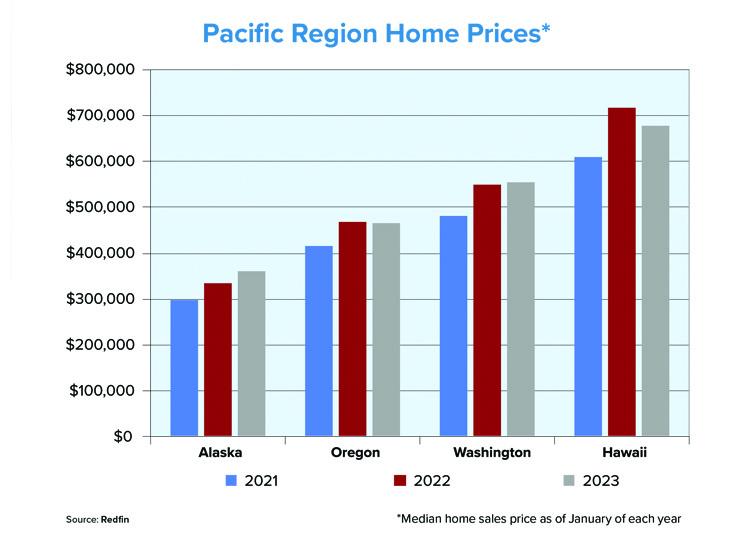
Median home prices across the Pacific Region rose last year but as of this past January were down from their summer 2022 peaks. In Alaska, the most inexpensive state of the bunch, the median price hit a peak of $371,700 in June, according to Redfin. As of January 2023, the median price had fallen slightly to $361,800. Despite the recent decline, Alaska home prices still saw a year-over-year increase of 8.2% at that time.
In Oregon, the median price peaked at $528,600 in May 2022 and moderated throughout the rest of the year to land at $464,500 in January. This represented a 1.1% annualized decrease, Redfin reported. In Washington, the median price hit $655,700 in May 2022 but fell by an astonishing $100,000 by January 2023. Despite the sharp decrease during the latter part of the year, the state still posted a 1.1% increase in the median sales price in 2023.
In Hawaii, the nation’s most expensive state to buy a home, prices peaked at $748,400 in April 2022. The median price stayed relatively flat throughout the rest of the year but began to decline in November, falling to $680,700 in January. This represented the region’s largest year-over-year price decrease, down 5.3% from one year earlier.
What the Locals Say
There are many reasons to love living in Hawaii — the weather, the people, the friendships and the community among them. Community plays a big role in homeownership as you build your community around your home. Maybe it’s because my home, family and friends are here, but I grew up in California and I wouldn’t move back.
Of course, the housing market is a challenge across the country and Hawaii is no exception. We have a lot of people who end up leaving the state, with many heading to Nevada and Oregon. We saw home prices rise in 2021 and 2022, and we got hit by the rising interest rates. There just isn’t a lot of inventory on the market, and we’re still seeing multiple-offer situations and bidding wars occur on the inventory that does exist. Listings are also staying on the market longer.
Right now, many people are using adjustable- rate loans to purchase their home and plan to refinance later because they can get the property that they want at a payment that works for them. I’m doing more ARMs than I ever have and many are set to refinance once rates drop again.
We’re also trying to help all our first-time homebuyers to realize the benefit of a Mortgage Credit Certificate (MCC). The MCC provides a tax credit for 20% of annual mortgage interest to help with housing-payment affordability. It lasts for the lifetime of the mortgage and is a fantastic option for those who qualify.

Producing branch manager
Academy Mortgage
3 Cities to Watch
Bellingham
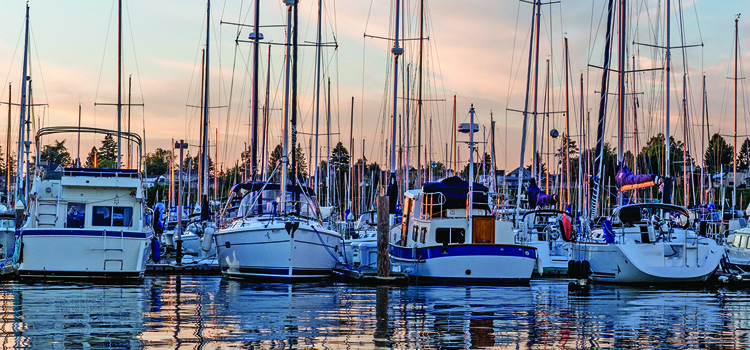
Located in northwestern Washington, about 30 minutes south of the Canadian border, Bellingham is a gateway to the natural beauty of the Pacific Northwest. Residents and visitors alike can take advantage of Bellingham’s many ferries to the San Juan Islands or Alaska, or head east to the North Cascades and Mount Baker for hiking, skiing and more. The city is home to Western Washington University, rated as the No. 1 public university for master’s degree candidates in the Pacific Northwest.
Fairbanks
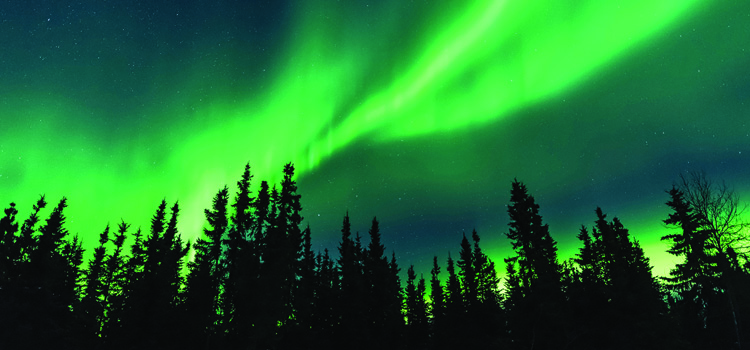
“The Golden Heart of Alaska” lies far to the north of Anchorage in the state’s interior. The Fairbanks region is Alaska’s second-largest population center with about 100,000 residents. It serves as a base camp for Denali National Park and the Arctic wilderness, and it is renowned as a place to see the northern lights or experience the midnight sun, with constant daylight for 70 days each summer. With two military bases, the federal government is a major employer in Fairbanks.
Salem
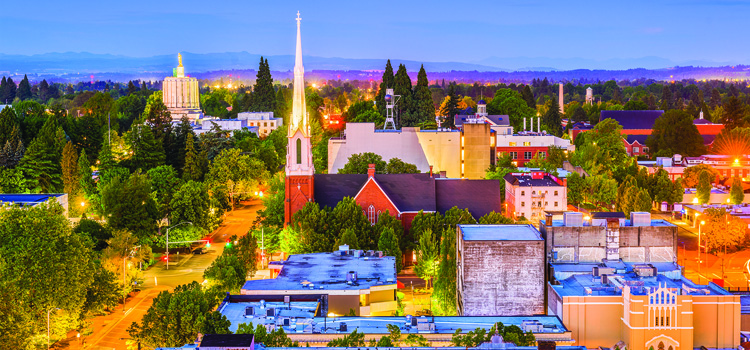
Oregon’s capital city lies in the heart of the Willamette Valley, famous for its fertile farmland and more than 700 wineries and vineyards. Salem is home to about 178,000 people and its largest employer is the state government. Cross the street from the Oregon State Capitol building and you’re on the campus of Willamette University, a prestigious liberal arts college founded in 1842 and considered the “First University in the West.” The median home sales price was $424,900 as of this past February.
Sources: Alaska’s News Source, Alaska Volcano Observatory, Axios, Burke Museum, City of Salem, Grassroot Institute of Hawaii, Insurance Information Institute, Oregon Public Broadcasting, Realtor.com, Redfin, Travel Alaska, U.S. Geological Survey, USA Today, Visit Bellingham, Willamette University, Willamette Valley Visitors Association
Author
-

Hannah Darden is the former industry rankings editor at Scotsman Guide Inc.
View all posts


